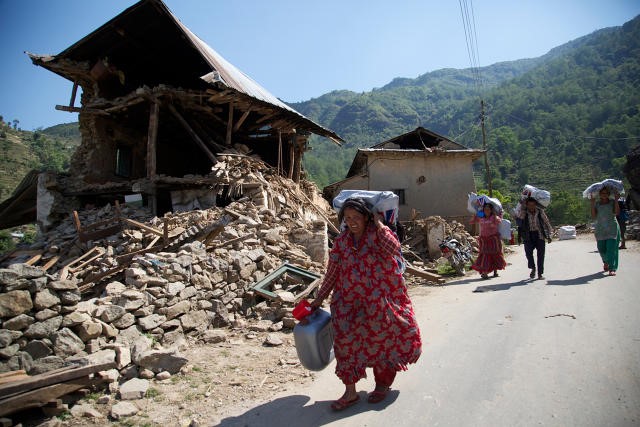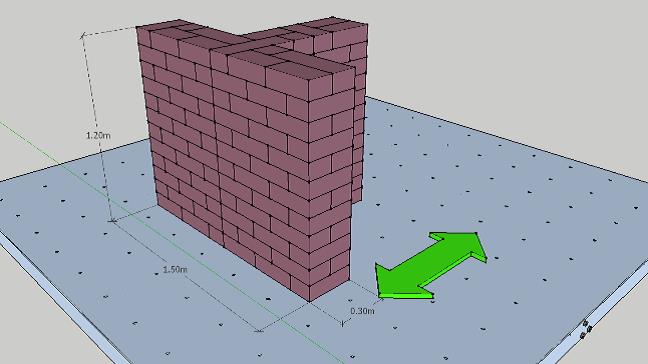Earthquake-Resilient Construction Using Local Materials
Purdue Collaborator: School of Civil Engineering


The Challenge: Earthquake Resilient Construction
As a result of the 7.8 earthquake in Nepal in April, 2015, a majority of stone masonry houses in the remote, rural areas of Nepal suffered damage significant enough that the homes will not be able to be repaired. The aftershock also caused further damage and collapse to those homes already partially damaged. A common theme heard from the affected people was that they wished to be told how to rebuild safer, earthquake-resistant homes.
Catholic Relief Services (CRS) is working with the Nepalese government and communities, and with other NGOs, on the Building Back Safer program. To this end they partner with Purdue Engineering’s Innovation to International Development Labs to help rural communities recover from disasters like the 2015 Nepal Earthquake by rebuilding in ways that reduce the risk of a similar disaster in the future. To be effective and feasible, the plan for rebuilding must incorporate materials and practices easily accessible to affected communities. In rural areas of Nepal, unreinforced stone masonry with earth mortar and wooden seismic bands is of common use. The seed grant project shall identify ways in which stone, earth, and wood construction can be used to:
- Improve building toughness, stiffness, and redundancy
- Reduce risk of collapse
- Produce simple solutions requiring minimal technical training for implementation
The Purdue Innovation: Dynamic Tests of Stone Masonry Walls with Earth Mortar
Typical stone masonry walls in Nepal range from 450 mm to 500 mm thick with aspect ratios of approximately 4:1. The use of “through” stones (i.e. bond stones) is required at a spacing of 600 mm or less every two courses. Similarly, the use of bond stones is required where partition walls frame into exterior walls (CRS, 2015). The proposed test specimens shall be 2/3-scaled, T-shaped walls (The walls shall be two wythes and approximately 300 mm thick, with aspect ratios of 4:1. The out-of-plane wall shall be approximately 1500 mm long, and the in-plane wall shall be approximately 1000 mm long. These T-shaped specimens are representative of typical interior connections, which are more critical than corners because demands are twice as large at interior connections.
Two specimens shall be built and tested. The proposed specimens will be nominally identical except for the earth mortar, of which there are two types:
- Type P: Plain earth mortar
- Type F: Earth mortar with fibers (i.e. proposed improvements based on research at OBU)
Specimen type P is representative of what has been built in the past. It will act as a reference for evaluating the effect on seismic performance of adding fibers to the mortar (type F). Both specimens shall incorporate bond stones as required by the Nepal Building Code. Depending on the performance of the wall systems and availability of additional funding, testing of the following systems may be recommended:
- Type N: No mortar (dry stone)
- Type W: Earth mortar with fibers and NSET detailing recommendations (e.g., wood banding)
Related Sustainable Development Goals
- Goal 9: Build resilient infrastructure, promote sustainable industrialization and foster innovation
Facilitate sustainable and resilient infrastructure development in developing countries through enhanced financial, technological and technical support to African countries, least developed countries, landlocked developing countries and Small Island Developing States
- Goal 11: Make cities inclusive, safe, resilient and sustainable
By 2020, substantially increase the number of cities and human settlements adopting and implementing integrated policies and plans towards inclusion, resource efficiency, mitigation and adaptation to climate change, resilience to disasters, and develop and implement, in line with the Sendai Framework for Disaster Risk Reduction 2015-2030, holistic disaster risk management at all levels.
The Partners:
Purdue University and Catholic Relief Services (CRS)
- Lucas Laughery, Principal Investigator, Ph.D. Candidate / Post-Doctoral Researcher, Purdue
- Ayhan Irfanoglu, Principal Investigator, Assoc. Prof. of Civil Engineering, Purdue
- Santiago Pujol, Senior Personnel, Prof. of Civil Engineering, Purdue
- Loren Lockwood – Shelter Advisor Nepal, CRS
- Jamie Richardson – Shelter Advisor Global, CRS
- Lorraine Bramwell – Country Manager Nepal, CRS
- Alexandra Towns – University Relations US, CRS
